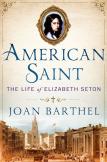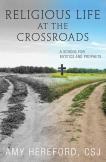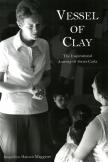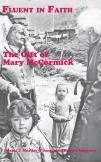Living on the Edge: Religious Women: Past, Present, Future?
The study of Catholic women religious is “hot.” Academic and non-academic writers, documentary filmmakers and the media are producing and publishing materials in record numbers highlighting the lives and work of American Catholic sisters/nuns. Even funding agencies and foundations are beginning to open their pockets (just slightly) to support academics and independent scholars who are pursuing the many narratives that trace the historical and contemporary lives and activities of Catholic sisters both in the United States and abroad. Women religious themselves are publishing in ever growing numbers, providing memoirs, scholarly analyses and multi-disciplinary assessments of religious life.
The five books reviewed here offer five portraits, slices of religious life as experienced by Catholic sisters (apostolic and contemplative) and one laywoman. Each narrative provides snapshots of time, place and circumstance. Each book uses a different lens to describe, analyze and understand what motivates each story. Finally, the authors and ultimately their readers understand that there is not one formula or path to religious life. The roads vary as much as the individuals who choose to make the journeys.
Of these five books, two are more thought-provoking. Although the women religious discussed are separated by almost two centuries, American Saint and Religious Life at the Crossroads describe, and in some cases analyze, religious life while providing bookends of experience for Catholic women religious in the changing historical and cultural milieu of American culture. In 1803 Elizabeth Bayley Seton, an Episcopalian, set her course for a new direction in life. With her gravely ill husband, she sailed to Italy hoping to revive his health. When she returned to her native New York the following year as a widow, she converted to Catholicism and faced the task of providing for her five children. In American Saint, Joan Barthel traces the life of Seton through letters and records, with particular detail about Seton’s personal struggles as she built a new life as a single mother and a Catholic aspiring to religious life. After struggle and religious discrimination in New York, Seton moved her family to Baltimore in 1808 to open a school for girls. In 1809 she founded the first order of American nuns and ultimately one of the largest, the Sisters of Charity. In 1975 Elizabeth Seton was canonized as the first native-born saint of the United States.
Barthel’s book is at its best describing Seton’s personal struggles as a widow and mother of five, who chose to embrace Catholic religious life in a strongly Protestant America, suspicious of anything Catholic and bound by gender parameters and limitations within church and state. Using extensive primary documents, particularly correspondence, Barthel documents Seton’s angst, both spiritual and personal, as she deals with ill, sometimes wayward children, who must adjust to their mother’s very unconventional choices.
Likewise, Seton seeks clerical affirmation and approval even as she chafes at hierarchical and patriarchal structures that make her life’s aspirations more difficult. Although these personal struggles are important to the narrative, I wished the author would have gone further to provide the reader with a larger cultural context for Seton’s life and work. We are told much about the anti-Catholic sentiment in antebellum America, which was at time virulent; but Elizabeth Seton also lived in a world where all women who chose to make unconventional choices and aspired to leadership, regardless of religion, were buffeted with religious and civil laws that maintained their dependency through religious, economic, political, social and legal institutions.
Two hundred years after the struggles of Elizabeth Seton, women religious are still working and struggling—ironically with some of the same issues that bedeviled their 19th century counterpart. Religious Life at the Crossroad is the 21st-century analysis of the present and future of religious life. Written by Amy Hereford, C.S.J., an attorney and canonist, the book traces religious life from its past “marked by courage and creativity in the face of adversity as well as by heroism and zeal.” Hereford attempts to chart a course into the future by understanding the historical and present characteristics of religious life through the context of the time. Her self-appointed task was to use the ideas, social media conversations and visions of her “minority cohort” (younger women religious) to imagine “the future of religious life in the next fifty years.” The author takes a linear approach to her topic as she moves from the earliest forms of religious life, beginning with the desert mothers and fathers and moving through the Second Vatican Council renewal period. Using theological communities, including Dietrich Bonhoeffer’s New Monasticism, Brother Roger and the Taizé Community and Dorothy Day and the Catholic Worker movement, she looks for “seeds of newness” and re-imagines the vows, community life and mission in the context of the 21st century.
The strength of this book lies in Hereford’s approach to the topic. Rather than just speak from present-day realities, she places religious life into context. In the last section she describes newer concepts of governance, networking and formation, describing religious life as a “school for prophets and mystics”—a radical Christian community that “inspired, attracted, and sustained the religious of every age.” Paraphrasing Sister Mary Luke Tobin, a sister of Loretto and one of 23 women who attended Vatican II, Hereford writes, “There will come a time when some of us will go one way and others will go another, each group remaining true to its call and living its truth.” Hereford’s insight and interpretations provide opportunities for thought-provoking analysis, particularly about how culture helps determine what religious life looks like and what it could be.
Between the chronological bookends of American Saint and Religious Life at the Crossroads, three other books provide 20th-century profiles that expand thinking on religious life and offer dramatic alternatives. In Vessel of Clay, Jacqueline Hansen Maggiore explores the life of the Maryknoll sister Carla Piette, who joined religious life in 1958 after growing up in Wisconsin. Piette’s work in Latin America came during the height of the Catholic Church’s presence in Central and South America. Using correspondence and interviews, Maggiore describes Carla’s work in Chile, where she served for 15 years before her untimely death in a flash flood in El Salvador, where she had recently been missioned. Piette drowned saving the life of Sister Ita Ford, one of four religious women raped and murdered in El Salvador three months later in 1980.
Jacqueline Maggiore joined Donald J. Mueller to write the story of another Catholic woman working in Latin America a decade later. “Wife, widow, single mother” Mary McCormick was the inspiration for Fluent in Faith. After her husband’s early death, McCormick, a laywoman, joined Papal Volunteers for Latin America and moved with her daughters to Bogota, Colombia. Using interviews and other primary documents, the authors describe McCormick as never really mastering the language but never reluctant to take on issues of poverty, education and compassion as she worked with Colombian families, particularly women and children, from 1968 to 1994.
Abbie Reese takes on a different challenge in Dedicated to God: An Oral History of Cloistered Nuns. Reese gains the trust and respect of the Poor Clare Colettine Order of the Corpus Christi Monastery in Rockford, Ill. Rejecting modern life, these 20 sisters live outside the mainstream “taking vows of poverty, chastity, obedience and enclosure.” Over a six-year period, the author interviews sisters who volunteer to share their thoughts, aspirations, reflections and spirituality amid their daily lives of prayer, gardening, baking and manual labor. They are dependent upon benefactors for food and monetary donations. The author’s sensitivity and patience allowed her unprecedented access to a group of religious women who are often misunderstood by most 21st-century Americans, if not completely incomprehensible to them.
As I read these five books I found their differences are many, and it is easy to focus on the differences. The time periods of the stories span the early 19th century to the 21st century. One is written about an important 19th-century foundress of a large religious order in the United States, two others address the late 20th-century global social justice work and sacrifices of two women working in Latin America, one a religious—one a laywoman, another delves into the lives and oral histories of a contemporary, contemplative order and one provides scholarly and personal analysis of the future of religious life “at the crossroads,” asking the question “where have we been, and where do we go from here?”
So, where do we go from here? I cannot but think of the current struggles and tensions between the Vatican and contemporary women religious. From Elizabeth Seton to 21st-century women religious, the tensions are implicit, if not explicit, in the struggle over who defines concepts of gender, autonomy and leadership within women’s communities. Despite the differences among the religious women and their stories, represented in these books, a defining thread seems to run through the variety of subjects, time periods and themes discussed by the authors. The women and religious communities depicted were all listening to a “call” that some of us do not “hear,” a call that even the Vatican at times refuses to hear or validate except to label it “heresy.”
The most recent impasse between the Vatican and women religious is simply the latest incarnation of the dissonance between male clerics and sisters. American women religious have been important “players” in most of the defining moments in the struggle for social justice and human rights in this nation and around the world. And they have been speaking publicly about their experiences and their vision, pushing the church, nation and global society to promote and defend human rights. America and The National Catholic Reporter, among other media outlets, have given voice to the sisters’ words and experiences, giving them larger audiences. In 1965 America published an essay by Rosemary Flanigan, C.S.J., one of the first six sisters to protest publicly in Selma, Ala., during the civil rights era. She wrote that a “nationwide fervor” erupted when sisters were seen in photographs published by major news outlets. Labeled a “disgrace” by a southern bishop, sisters were verbally attacked by some clerics and laity who labeled their actions “harmful” to the church. In 1993 Mary Heather Mackinnon, a Notre Dame sister, wrote in the N.C.R. that religious life needs to “re-envision itself within a new social and cultural paradigm that is challenging traditional understandings of anthropology, economics, politics, ethnics, education, religion and spirituality.” More recently Ilia Delio, a Franciscan sister, spoke to the Leadership Conference of Women Religious about “Religious Life on the Edge of the Universe.”
Beginning with the story of Elizabeth Seton and moving to Amy Hereford’s thought-provoking road map to the future, religious life has often embraced the “edge.” These women made nontraditional choices, and, in many cases, countercultural decisions about their lives and the expression of their faith. Although most chose vowed lives, they came to that from a variety of ages, backgrounds and perspectives. All valued community and mission as they defined it at a particular time and for a given purpose. All gave powerful witness for others through words and actions, and all were empowered by their choices. Finally, all gave years of their lives by working toward the realization of their dreams, striving to find meaning in the context of the imperfect world they inhabited.
Whether the Vatican acknowledges it or not, women religious are leading the church into the future. Religious life has been vital for 16 centuries, redefining itself—not often but at pivotal points in time. Religious women have served the church best when living in the mainstream, speaking truth to power and challenging the status quo—religious or secular. As Tom Fox wrote in a recent article in NCR: “These women pride themselves on living and working at the frontiers, pushing the boundaries, seeking ways to serve the church, often before others recognize the need.” As long as women religious are willing to be the “prophets and mystics” described by Amy Hereford, religious life will continue. Demographically smaller yes, but more importantly—if women religious continue to be willing to “live on the edge,” they will retain a vitality and energy that cannot be contained by parochial or patriarchal traditions of church or secular society. The church needs the gifts that women religious give, and religious life will survive, albeit in new forms. Sixteen centuries of church history tell us that and provide the impetus and courage for the future.
This article also appeared in print, under the headline “Living on the Edge,” in the December 1, 2014, issue.












